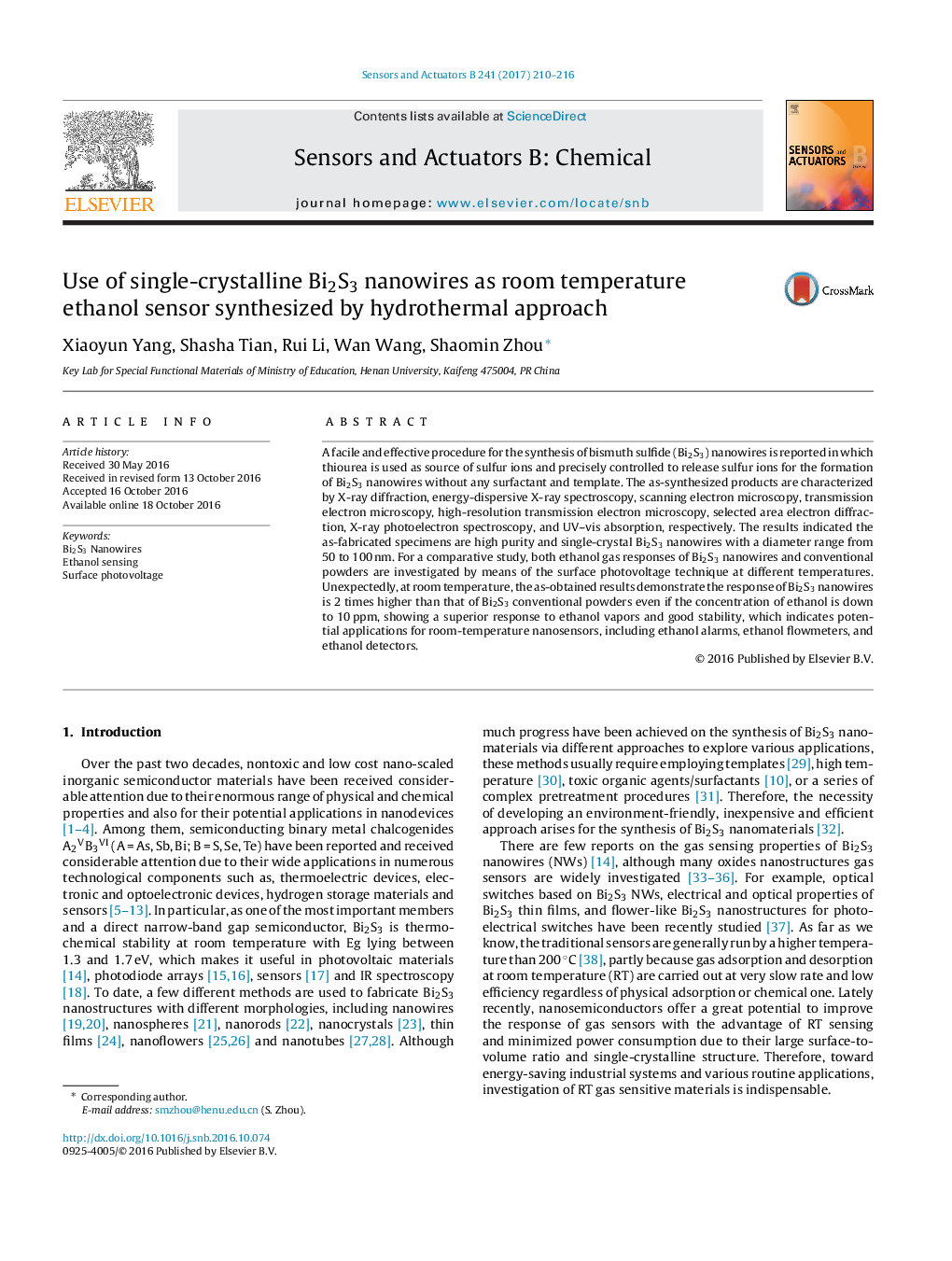| Article ID | Journal | Published Year | Pages | File Type |
|---|---|---|---|---|
| 5010084 | Sensors and Actuators B: Chemical | 2017 | 7 Pages |
Abstract
A facile and effective procedure for the synthesis of bismuth sulfide (Bi2S3) nanowires is reported in which thiourea is used as source of sulfur ions and precisely controlled to release sulfur ions for the formation of Bi2S3 nanowires without any surfactant and template. The as-synthesized products are characterized by X-ray diffraction, energy-dispersive X-ray spectroscopy, scanning electron microscopy, transmission electron microscopy, high-resolution transmission electron microscopy, selected area electron diffraction, X-ray photoelectron spectroscopy, and UV-vis absorption, respectively. The results indicated the as-fabricated specimens are high purity and single-crystal Bi2S3 nanowires with a diameter range from 50 to 100Â nm. For a comparative study, both ethanol gas responses of Bi2S3 nanowires and conventional powders are investigated by means of the surface photovoltage technique at different temperatures. Unexpectedly, at room temperature, the as-obtained results demonstrate the response of Bi2S3 nanowires is 2 times higher than that of Bi2S3 conventional powders even if the concentration of ethanol is down to 10Â ppm, showing a superior response to ethanol vapors and good stability, which indicates potential applications for room-temperature nanosensors, including ethanol alarms, ethanol flowmeters, and ethanol detectors.
Keywords
Related Topics
Physical Sciences and Engineering
Chemistry
Analytical Chemistry
Authors
Xiaoyun Yang, Shasha Tian, Rui Li, Wan Wang, Shaomin Zhou,
